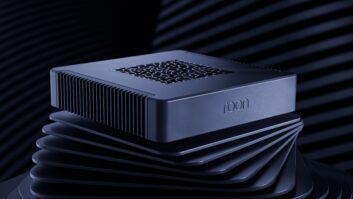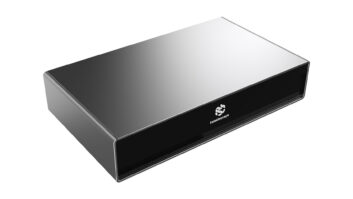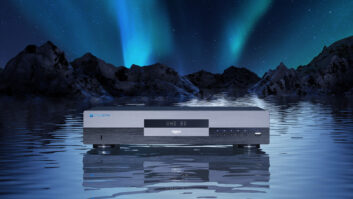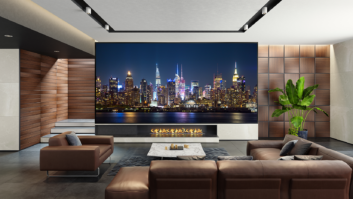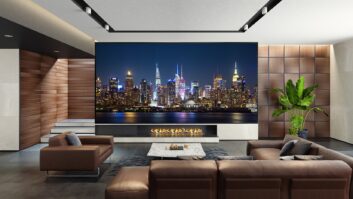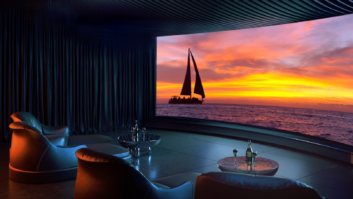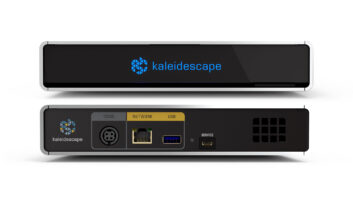When Parks Associates partnered with Residential Systems in its second-quarter survey, the primary goal was to quantify sales of media servers and media storage controllers through the installing dealer channel and identify the features and functions desired by dealers in the next generation of systems.
Numerous manufacturers have been introducing these systems over the last year, adding to the systems introduced by pioneers Escient and ReQuest in the late 1990s. In addition, the Media Center PC is poised to become a key platform of choice among dealers. Therefore, Parks Associates designed the 2Q05 Survey to determine how popular the current generation of media servers and their counterpartsmedia storage controllersare among customers of installing dealers, and to find out the short-term prospects for this product category.
Based on the surveys results, Parks Associates confirmed that media servers are still a hot product category, with sales expected to surge from less than 40,000 units in 2004 to 65,000 to 70,000 in 2005. Dealers, see media servers replacing other forms of media storage, e.g. CD/DVD jukeboxes, when costs become comparable. Sales of media storage controllers, e.g. the Escient FireBall, are expected to more than double from 13,000 to 14,000 units in 2004 to more than 30,000 in 2005. In addition, iPod-type docking stations are catching on in the dealer channel with twice as many dealers expected to be selling them by the end of 2005 as are currently offering them.
In the survey, dealers were also asked about two closely related issues:
1) What percentage of the whole-house audio systems that they install are connected to the Internet?
2) Do they install iPod-type docking stations?
The 2Q05 Survey addressed the several topics to quantify the market for media servers and provide manufacturers with guidance for doing business with dealers and enhancing their next generation of systems. Note: Parks Associates invites only dealers serving the residential market to participate in its Installing Dealer Surveys, therefore the commercial market in total is significantly larger than that served by dealers participating in these surveys. In addition, findings from the 2Q05 survey are evaluated in conjunction with findings from previous surveys to arrive at the estimates presented in this report.
Based on 2Q05 survey findings, Parks Associates estimates that the Installing Dealer Channel generated approximately $7.4 billion in revenue in 2004; $5.9 billion was generated serving residential customers; $1.5 billion was from commercial customers.
Parks Associates estimates that over the course of 2004 there were an average of 3,200 dealers operating in the U.S., up from just over 3,000 over the course of 2003. On average it is estimated that each firm generated $2.3 million in 2004, up 9.5 percent from the $2.1 million that each firm generated, on average, in 2003. Approximately 20 percent of the revenue of dealers serving residential markets is generated from commercial customers. For instance 54 percent of dealers responding to the 2Q05 survey also installed systems in conference rooms in office buildings, 30 percent did work in schools and/or places of worship, and 18 percent installed systems in theaters, arenas, and stadiums.
Revenue generated from residential installation services (excluding associated hardware sales) is a growing portion of installing dealers total revenue. In 2002, residential installation services accounted for $2.3 billion or 54 percent of dealers residential revenue. In 2003, installation services accounted for $2.8 billion or more than 55 percent of revenues from residential customers. Last year those services accounted for 56 percent of residential revenues, and Parks Associates projects that this trend will continue in 2005.
The reason for this trend is two-fold: 1) prices (and margins) on hardware are declining, and 2) Dealers are expanding the scope of their work beyond one or two product categories. An example, observed in previous research supporting this rationale, is that many dealers expand home theater installations to whole-house audio and control systems. This increases the amount of installation services required to complete the project, which increases dealers revenues and net profit as margins on installation tend to run five to 10 points more than on hardware.
Whole-house audio, home theater, and home controls (including environmental controls and wireless touchpads) are the big three revenue-generating product categories for dealers. In 2004 approximately $1.6 billion was generated from the sales and installation of whole-house audio systems and a comparable amount was generated from home theater system sales. The home controls category was not far behind, accounting for nearly $1.3 billion in total revenues through the channel.
The overall rank order of sales volumes by category is not expected to change in 2005, although PC networking is becoming a significant product category and will likely account for more of dealers revenues than security systems within three to four years. The growth of PC networking will be driven by customers desire to connect their home systems to the Internet for everything from accessing music and videos to playing online games to monitoring their homes while away. End-users will find it more convenient to pay dealers to install and set up these capabilities rather than do it
themselves despite manufacturers claims that installation is do-it-yourself.
Revenues through the installing dealer channel for both hardware and installation services for the residential market are expected to grow at a compound average annual growth rate (CAGR) of 14 percent over the next three years from $5.9 billion in 2004 to $8.8 billion by 2007.
During this period the dealer population is projected to rise from 3,200 in 2004 (average over the course of the year) to more than 3,700 in 2007. This projection is based on the assumption that dealers will remain structured essentially as they are today: an average of five to nine full-time employees serving a relatively limited geographic area with annual revenues of $2 million to $3 million. It is anticipated that average annual revenues per dealer will rise at better than nine percent CAGR from $2.3 million in 2004 to $3.0 million in 2007. That said, Parks Associates is closely monitoring consolidation trends in the channel driven by some dealers desire to build economies of scale by leveraging skilled staff and garnering enhanced margins through volume purchasing contracts.
Results of Parks Associates 2Q05 Installing Dealer survey revealed that 70 to 75 percent of installing dealers currently offer media servers to the residential market; another 20 percent planned to in 2005. [Definition: a hard-disk-based system capable of storing audio, video, pictorial and other content in digital format. Some systems are only capable of storing music and digital pictures.]
Approximately 70 percent of dealers sell only manufactured systems rather than systems that they integrate from standard components. Approximately 70 percent of those selling media servers sell both systems capable of only audio content as well as the more expensive and capable video servers which store and distribute video as well as audio content.
Dealers selling video servers reported selling an average of five to six systems in 2004 and expect to push sales to nine to10 systems in 2005. Those selling audio servers sold 13 to 14 systems in 2004 and see sales growing to more than 20 systems in 2005. To put sales growth another way, dealers estimated that about 25 percent of their home theater/whole-house audio installations included media servers in 2004; they expected this to rise to 36 percent in 2005. Media servers are clearly an up-and-coming product category for dealers.
Taking the results of the 2Q05 Survey together with our estimates of the number of dealers in the channel and some conservative judgment, Parks Associates projects that 65,000 to 70,000 media servers will be sold in 2005, up from approximately 37,000 in 2004 (See Figure 1-4).
In 2004, 8,000 to 9,000 video servers were sold by installing dealers to residential customers and fewer than 30,000 audio-only servers were sold. Parks Associates projects that in 2005 sales of video servers will nearly double to 16,000 to 17,000 units while sales of audio servers will increase to more than 50,000 units.
In 2004 dealers reported that the average video server cost end users an average of $10,000 to $11,000, installed; audio systems $4,000 to $5,000. Based on this and Parks Associates expectation that average installed costs will drop 10 to 15 percent, the total media server market reached $224 million in 2004 and will rise to $350 to $400 million in 2005 (See Figure 1-5.) Video servers accounted for an estimated $94 million or 42% of the total in 2004 and are expected to reach sales of $160 million to $180 million this year, accounting for an increased 46% of total media server revenues. Audio server sales totaled $130 million in 2004 and are expected to climb to $190 million to $220 million in 2005.
On average, total revenues for a dealer selling both audio and video servers can be expected to be $150,000 to $200,000 in 2005 or seven to eight percent of their total annual revenuescertainly not a reason to drop all other product categories, but significant enough to capture their attention.
Dealers reported earning reasonably healthy margins on these systems-36 percent on the hardware and 43 percent on installation. In addition, they said it took them typically two to three hours additional time to install a media server, although 13 percent reportedly took more than eight hours to install one. Clearly, the nature of the project has a lot to do with how complicated, and time-consuming, the installation.
ReQuest and Escient are the top-selling brands, according to dealers who selected up to three brands from all that they sell. Each of these firms manufactures both audio/video servers and audio-only systems. These brands are both pioneers in the category and are facing increasing competition from a host of challengers. Other brands among the top 10 most frequently mentioned in the 2Q05 survey include AMX, ELAN, and Kaleidescape (See Figure 1-3).
Video servers can typically hold up to 400 to 500 DVDs, although systems with capacities of less than this were reported by about half of the dealers selling video servers. Audio servers typically have capacities of 80GB to 160GB with 120GB being a sweet spot on the storage spectrum. Nearly 20 percent of dealers selling audio systems reported that they typically install servers with more than 250GB of storage.
Dealers were asked to indicate the features that they would like to see on the next generation of media servers. The top three requests from dealers were common to both video and audio-only servers: 1) The ability to integrate with a wider array of audio/video systems; 2) More storage; and 3) Easier-to-use controls. Dealers would also like to see video servers be able to control CD/DVD jukeboxes (tied for third place with easier-to-use controls). Audio-only servers may disappear in the future, as 49 percent of dealers selling these systems want them to also have video capability. The ability to control CD/DVD jukeboxes is also a desired feature on audio-only servers. Other improvements requested by dealers included redundancy/RAID architecture for both classes of servers and high-definition video capability for video servers.
Dealers were asked if they thought media servers would replace CD/DVD jukeboxes or other forms of content storage in the future. More than 80 percent said they would with 45 percent qualifying their response with the caveat that costs need to match jukeboxes for this to happen. Approximately 13 percent see media servers complementing, rather than replacing, jukeboxes and four percent say that their customers prefer jukeboxes to media servers.
Media storage controllers [defined as products that control CD/DVD jukeboxes, e.g. the Escient FireBall DVDM-100 DVD and Music Manager], are the lower-cost cousin to media servers. These products are sold by 52 percent of dealers responding to the 2Q05 survey. Another 24 percent plan to begin offering them by the end of 2005. Dealers selling these systems in 2004 reported average annual sales of nine units at an average installed cost to end users of $3,300. These same dealers expect sales to increase to 15 units during 2005.
Based on this information, together with our estimates of the number of dealers in the channel and some conservative judgment, Parks Associates projects that 13,000 to 14,000 media storage controllers were sold through the installing dealer channel in the U.S. in 2004. This year sales are projected to more than double to 30,000 to 35,000 units.
Parks Associates estimates that revenues for media storage controllers in 2004 were $45 million to $50 million. Assuming a 15 percent reduction in the average installed cost of these systems in 2005, we project the market value to essentially double to $85 million to $90 million (See Figure 1-10).
Escient is the top-selling brand of media storage controller sold through installing dealers followed by ReQuest and ELAN. In 2004, dealers selling media storage controllers included them in 23 percent of their home theater and/or whole-house audio system installations. These same dealers expect this ratio to increase to 28 percent in 2005.
Dealers responding to the 2Q05 Survey reported that over 40 percent of the whole-house audio systems that they installed in 2004 were connected to the Internet. This connection rate is double the 20 percent reported for 2003 as more users find access to online music services attractive complements to their own libraries. In 2005, dealers expect that they will see more than half of the audio systems they install connected to the Internet.
Not long ago many dealers frowned on compressed, digitized music formats. The success of Apples iPod may not be changing their opinions about the quality offered by these formats, but it is changing the products that they offer their customers. Among dealers responding to the 2Q05 Survey, 36 percent reported that they offer iPod-type docking stations, e.g. the Sonance iPort, connected to their whole-house audio installations. Another 37 percent dont currently offer these systems, but plan to in 2005. Only 17 percent have no plans to offer iPod-type docking stations.
Its not difficult to understand why twice as many dealers will be offering these systems by the end of 2005: 65 percent see the category as a good reason to re-contact their customers with a product that is an easy sale (44 percent) and easy to install (38 percent). Less than 10 percent of dealers currently installing these systems are dissatisfied with it as a category to offer.
Dealers expect another year of double-digit sales growth in 2005. More than 80 percent of dealers saw their overall sales to residential customers grow in the first half of 2005 compared to the same period in 2004. On average, dealers saw sales grow 11 to 12 percent period-to-period with 28 percent reporting growth of more that 20 percent. Only five percent experienced a decline in sales during the first half compared to the first half of 2004.
During 2004, and again with the 2Q05 Survey, Parks Associates has been collecting information from dealers about their sales backlogbooked orders to be delivered/installed. This is a good short-term indicator of sales activity.
Each quarter a different mix of dealers reports their activities to us, so we normalize the dollar amount reported by dividing the backlog dollar volume by average monthly revenue for the prior year for each dealer. We then arrive at an index of months of backlog in terms prior year revenue. In the first quarter of 2004 backlog was about 1.9 months, i.e. the amount of orders booked, but not yet fulfilled equaled 1.9 months of average 2003 sales. Mid-year the backlog dropped 10 percent to 1.7 months, but by year end, backlog increased to 1.8 months boding well for the start of 2005 and confirmed by results of the 2Q05 Survey.
Backlogs at the end of 2Q05 are back down to the 1.7 month level that may be the repeat of a seasonal phenomenon. We intend to continue collecting this information to report on the health of the channel and the condition of the market.
For more information, contact the author at [email protected].
Bill Albondi has directed the Parks Associates Installing Dealer ePanel research program since 2001.
